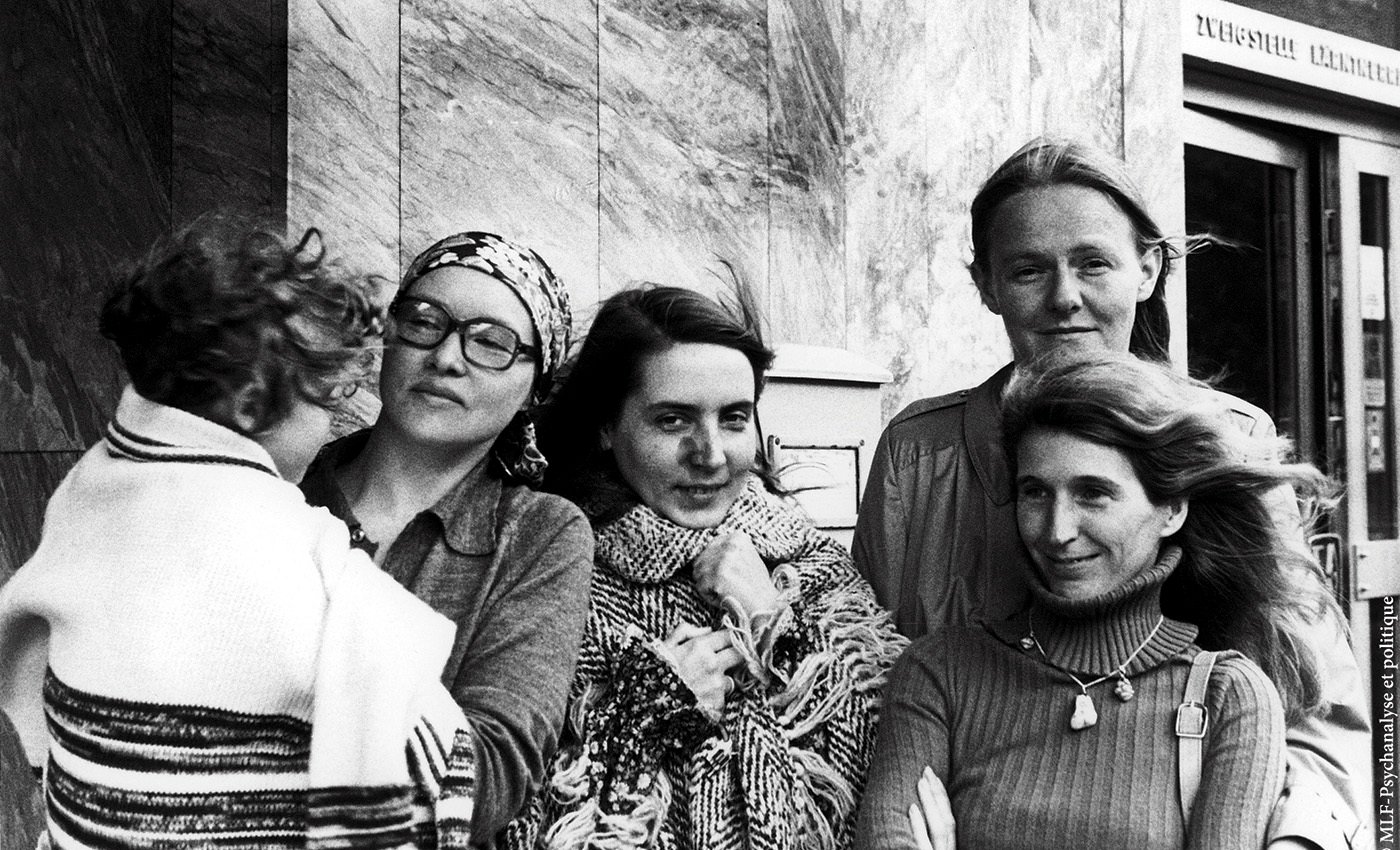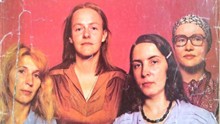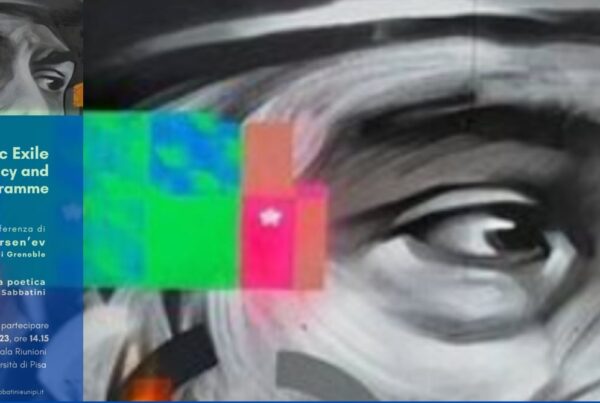
Tat’iana Mamonova, Nataliia Malakhovskaia, Tat’iana Goricheva i Iuliia Voznesenskia. Pic: Des Femmes — Antoinette Fouque.
Title:
Zhenshchina i Rossiia – Woman and Russia [Almanac]
Year of publication: 1979
Place: Leningrad
Editors: Tat’iana Goricheva, Nataliia Malakhovskaia, Tat’iana Mamonova
Number of issues: 1
Main contributors: Iuliia Voznesenskaia, Nataliia Mal’tseva, Sof’ia Sokolova and others
Description:
Created as an alternative to the ideologically oriented Soviet women’s magazines (including “Rabotnitsa”, founded by Lenin in 1914), the almanac “Zhenshchina i Rossiia” was originally intended to be spread via the tamizdat. However, recognising that publication abroad would have a lesser impact on the condition of women in Russia, the editors Goricheva, Malakhovskaia and Mamonova decided to print the magazine in Leningrad, a city distinguished by a tradition of iconic Russian women (including Anna Akhmatova and Ol’ga Berggol’ts). The old capital, where the three young women lived, had a greater number of activists than Moscow. The newborn Russian feminism (if the movement can be described as such; cf. Parisi 2015: 133) swung between more radical pro-Western positions and convictions explicitly influenced by the Christian-Orthodox religion: these two different and sometimes antithetical ways of understanding the world and the magazine, were embodied, respectively, in the persons of Tat’iana Mamonova (who, in 1975, had the idea of founding a feminist magazine; cf. Voznesenskaia 1981: web) and Tat’iana Goricheva (organiser of the famous philosophical-religious seminars in the flat on Kurliandskaia ulitsa).
The index of “Zhenshchina i Rossiia”, with the subtitle “Almanac for women about women”, includes writings and articles about the general situation of women in Russia, dedicating specific attention to domestic issues, in keeping with the opinion expressed later by Goricheva: “Soviet society is somehow a pseudo-matriarchal dystopia: more than a society it is a huge kitchen”. Among the topics covered, there was the total absence of men in the educational process of children, an atavistic social problem that is still far from having been solved today.
Despite the limited original print-run (five copies), the first and only issue of the almanac circulated widely, finding, according to Viacheslav Dolinin, “enormous resonance” (cf. Pispanen 2004: web). It seems that the majority of its readers were men, who vastly outnumbered women within the circles of the ‘Second culture’. The success of the magazine brought the editors and some of the contributors into the sights of the KGB.
The diversity of viewpoints within “Zhenshchina i Rossiia” was the basis for the group splitting up, that quickly led to the birth of a new project, this time exclusively Orthodox and Slavophile (cf. Parisi 2015: 132), the samizdat magazine “Mariia” (first issue dated May 1980). The distribution of this second magazine was accompanied by the creation of a club with the same name, which, like the magazine, embraced an anti-Marxist position.
The first document produced by the club, entitled Plea to mothers (Obrashchenie k materiam), spoke out against the recent Soviet invasion of Afghanistan. The author, Nataliia Lazareva, was arrested in September 1981. A year earlier, on July 20 1980 (the opening day of the Moscow Olympics), Mamonova, Goricheva and Malakhovskaia were expelled from the country, after having been subject to various perquisitions and intimidation. Iuliia Voznesenskaia had also been forced to emigrate a few months earlier (cf. Voznesenskaia 1981: web).
In August 1980, in Paris, “Zhenshchina i Rossiia” was republished in Russian (cf. Parisi 2015: 132) and shortly afterwards appeared in French. In the following months and years it was translated into other languages, including English, Portuguese and Japanese, (cf. Pispanen 2004: web). A volume published in 1983 by the Milanese publisher, La Casa di Matriona, entitled The Other Feminism, edited by Tat’iana Goricheva and the Mariia Club, was also dedicated to Christian feminism.
Notes:
This almanac, consisting of 130 pages, had an original print-run of 5 copies (cf. Dolinin 2003: 404).
Federico Iocca
[30th June 2021]
Translation by Alice Bucelli
Bibliography
- Dolinin V., Ivanov B., Ostanin B., Severiuchin D. (avt.-sost.), Samizdat Leningrada. Literaturnaia ėntsiklopediia, Novoe Literaturnoe Obozrenie, Moskva 2003.
- Nechaev V., Golosa russkikh zhenshchin (Obzor samizdatskikh zhurnalov “Zhenshchina i Rossiia” i “Mariia”), “Kontinent”, 26 (1980): 426-431.
- Parisi V., Il lettore eccedente. Edizioni periodiche del samizdat sovietico. 1956-1990, Il Mulino, Bologna 2013.
- Pispanen O. (ed.), 25 let zhenskomu al’manakhu “Zhenshchiny i Rossiia”, 17 December 2004, https://www.svoboda.org/a/24185707.html, online (last accessed: 30/06/2021).
- Voznesenskaia Iu., Zhenskoe dvizhenie v Rossii, “Posev” 4 (1981), http://antology.igrunov.ru/authors/voznesenskaya/1145211846.html, online (last accessed: 30/06/2021).
To cite this article:
Federico Iocca, Zhenshchina i Rossiia, in Voci libere in URSS. Letteratura, pensiero, arti indipendenti in Unione Sovietica e gli echi in Occidente (1953-1991), a cura di C. Pieralli, M. Sabbatini, Firenze University Press, Firenze 2021-, <vocilibereurss.fupress.net>.
eISBN 978-88-5518-463-2
© 2021 Author(s)
Content license: CC BY 4.0




